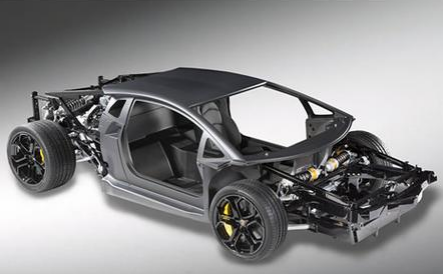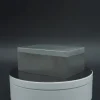1. Introduction
Just 24 hours ago, a major architecture firm in Copenhagen unveiled a new eco-office featuring a striking corten steel facade paired with a zinc clad roof—sparking renewed interest in metal clad building systems for their durability and low maintenance. This trend highlights how metal cladding is no longer just industrial—it’s stylish, sustainable, and versatile.

So, what exactly does ‘metal clad’ mean? In simple terms, metal clad refers to any structure, component, or surface that’s covered or layered with metal for protection, aesthetics, or performance. Whether it’s a metal clad house, a steel clad shed, or even metal clad electrical wire, the applications are vast and growing.
2. What Is Metal Clad? Understanding the Basics
The metal clad meaning centers around a composite material where a base metal is bonded—mechanically, metallurgically, or through electroplating—to another metal. This creates clad metals that combine the best properties of both materials, like corrosion resistance and strength.
Common examples include aluminum clad steel, stainless clad aluminum, and copper nickel clad. These are used in everything from aerospace to cookware. In construction, ‘metal clad’ often describes exterior systems like metal clad siding, metal clad wall panels, or a metal clad roof.
3. Popular Types of Metal Cladding in Architecture
Architects and builders love metal cladding for its sleek look and resilience. Here are some top choices:
- Corten steel siding: Known for its rust-like appearance that stabilizes over time; corten steel facade systems are low-maintenance and dramatic.
- Zinc facade and zinc clad roof: Elegant, self-healing, and long-lasting—zinc metal siding is ideal for modern designs like a zinc clad dormer.
- Copper siding: Ages beautifully into a green patina; often used in high-end metal clad houses.
- Colorbond standing seam and PAC Clad standing seam roof: Durable, weather-tight systems like vertical standing seam metal siding are popular for both residential and commercial metal clad buildings.
- Exterior corrugated metal siding: Offers a rustic-industrial vibe with strong structural performance—common in corrugated steel facade projects.

4. Industrial and Technical Uses of Clad Metals
Beyond buildings, clad metals play a critical role in engineering. Aluminum clad stainless steel and stainless clad aluminum are used in heat exchangers and chemical processing for their dual benefits of conductivity and corrosion resistance.
Metal clad wire—including aluminum clad steel wire, aluminum clad wire, and Cu clad wire—is essential in electrical and telecom applications. Similarly, aluminum clad pipe insulation helps maintain temperature in HVAC and industrial piping.
In manufacturing, you’ll find alloy clad materials like 2024 T3 clad and 7075 T6 clad aluminum plates, prized in aerospace for strength-to-weight ratios. Clad metal meaning here shifts toward performance composites rather than aesthetics.
5. Metal Plates and Sheets: The Backbone of Clad Systems
Many clad applications start with a solid base—like a steel plate, stainless steel plate, or aluminum plate. Options range from mild steel plate and carbon steel plate to specialty grades like 316 stainless steel plate or Inconel 718 plate.
Common formats include diamond plate steel (also called aluminum diamond tread plate or steel checker plate), perforated plate, and aluminum tread plate. Whether you need 1/8 inch steel plate or thick steel plate for structural support, these materials form the foundation for metal clad assemblies.

For engraving or identification, brass plates for engraving and metal nameplates are widely used. Meanwhile, electroplating techniques—like chromium electroplating or electroless nickel—add protective or decorative finishes to base metals.
6. Installation, Cost, and Maintenance Considerations
Installing a metal clad wall or metal clad roof requires expertise but pays off in longevity. Standing seam facade systems like PAC Clad HWP or PAC Clad coping offer clean lines and weather resistance.
Cost varies widely: corten siding cost can be higher upfront but saves on maintenance, while aluminum sheet for sale or steel plate near me options offer budget-friendly alternatives. Always consider lifecycle value, not just initial price.
Maintenance is minimal—most metal clad exteriors only need occasional rinsing. Unlike wood or vinyl, metal weatherboard won’t rot, warp, or attract pests.
7. The Future of Metal Clad Design
Sustainability is driving innovation. Recyclable materials like aluminum clad sheet and stainless steel metal plate align with green building standards. New alloys—such as zinc nickel alloy or titanium alloy plate—push performance boundaries.
Expect to see more hybrid systems, like stainless clad aluminum columns or PAC Clad column covers, blending form and function. As cities demand durable, fire-resistant, and vandal-resistant exteriors, metal clad building solutions will only grow in popularity.
8. Conclusion
From the sleek steel facade of a downtown high-rise to the humble metal clad shed in your backyard, metal clad systems offer unmatched versatility. Whether you’re choosing corten steel siding for its raw beauty or aluminum clad wire for its conductivity, understanding the metal clad meaning and types helps you make smarter, longer-lasting decisions.
Our Website founded on October 17, 2012, is a high-tech enterprise committed to the research and development, production, processing, sales and technical services of ceramic relative materials such as 7. Our products includes but not limited to Boron Carbide Ceramic Products, Boron Nitride Ceramic Products, Silicon Carbide Ceramic Products, Silicon Nitride Ceramic Products, Zirconium Dioxide Ceramic Products, etc. If you are interested, please feel free to contact us.
